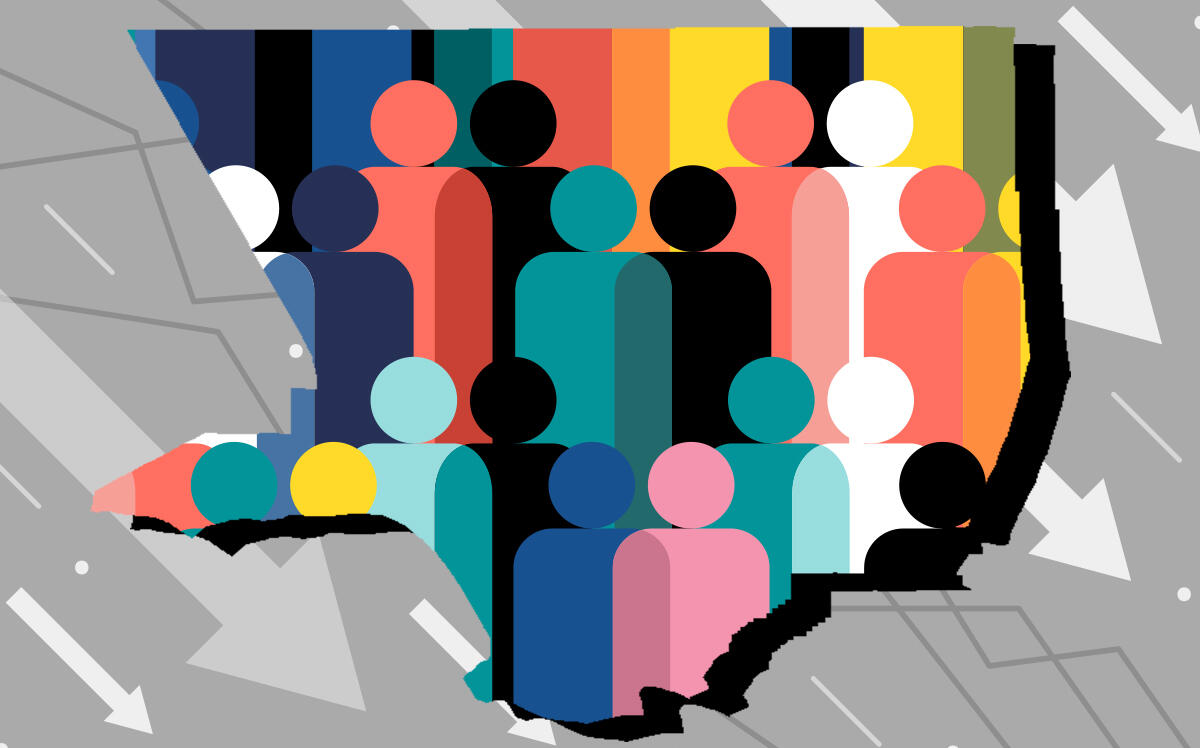 Does California know what time it is?
Does California know what time it is?
Trending
LA sheds 1 percent of population in pandemic era
Drop part of trend in large U.S. cities, with outflows of residents seeking cheaper, larger homes for remote work

The population of Los Angeles has fallen by 1 percent during the pandemic, as some residents left for cheaper homes with more space for remote work.
The drop mirrors other big-city declines in the year that ended July 1, 2021, the Wall Street Journal reported, citing new data from the U.S. Census Bureau.
Collectively, in the nine cities with more than one million people, the population fell 1.7 percent, a loss of 419,000 residents. Only two cities in that group grew: Phoenix and San Antonio.
New York, the nation’s largest city, lost 3.5 percent of its residents, or about 305,000 people. The 1 percent dip for Los Angeles, the second-largest city, came to 41,000 people. The population of the third-largest city, Chicago, fell by 1.6 percent, or 45,000 people.
Nowhere was the population drop felt more than San Francisco and other Bay Area cities, which generally led the pack in the percentage of residents who left town.
San Francisco’s population fell 6.3 percent during the pandemic – the most of any U.S. city, according to the latest census data. The Bay City lost nearly 55,000 people as residents bailed out for remote work.
In July, the city had 815,201 people, the lowest since 2010, erasing a decade-long population run-up fueled by the tech and social media sectors. Chicago’s population also dropped close to the 2010 level.
Several large cities that had logged recent annual gains saw losses, including Denver, Nashville, Seattle and Atlanta.
Midsize cities, or those with populations between 500,000 and one million, also saw their populations dip. Together, they declined 0.7%, losing 148,000 people.
Among those was San Jose, the Bay Area’s largest city, which saw its population fall 2.7 percent, dropping below 1 million people for the first time since 2013. It remained the 10th-most populated city in the U.S., with 983,489 people.
The Bay Area’s high housing costs and remote work policies in industries such as tech spurred out-migration during the pandemic as residents sought cheaper homes with more space, experts say.
Almost all California coastal cities lost population, while inland cities in the more affordable Central Valley and Inland Empire experienced population growth.
Across the nation, cities with fewer than a half-million people in effect saw flat growth. The group that ranges from 250,000 up to a half-million residents collectively lost 0.1 percent of its population, while those with 100,000 up to 250,000 people together grew 0.1 percent.
The 15 fastest growing cities across the nation were in the west and south, with Arizona, Texas, Florida and Idaho among the leaders.
Housing construction in Central Texas outpaced Los Angeles County, with Travis County, which includes Austin, adding 25,693 housing units in the year ended July 1. That’s more than the 22,925 in L.A. County, which has almost eight times as many people, according to census data.
The nation’s population grew only 0.1 percent between July 2020 and 2021, the slowest pace on record as births fell, deaths rose and international immigration plunged. California’s population fell slightly for the second year in a row in 2021, according to state figures.
[Wall Street Journal] – Dana Bartholomew
Read more
 Does California know what time it is?
Does California know what time it is?
 Census: Texas newcomers and natives are moving to these counties
Census: Texas newcomers and natives are moving to these counties




